Angry chord progressions have the power to evoke deep emotions, stir tension, and bring an intensity to the table that can transform a simple melody into an explosive expression of anger.
They can add depth to your tracks, infuse them with raw energy, and create a captivating story that connects with your listeners.
So, as a music producer, it’s super useful to know all about angry chord progressions to harness this energy and produce songs with emotional complexity.
Plus, connect with your audience on a deeper, more profound level, of course.
In today’s article, we’ll break down:
- The essence of angry chord progressions ✓
- Minor chords/minor scales and their emotional weight ✓
- The role of diminished chords in creating tension ✓
- How dissonance shapes anger in music ✓
- 9 angry chord progressions to give your tracks power & intensity ✓
- The importance of instrument selection ✓
- Balancing tension and release for dynamic impact ✓
- Tempo and rhythm adjustments for emotional expression ✓
- Key modulation techniques & the use of silence ✓
- How two chords can change everything ✓
- So much more ✓
You’ll know everything there is about angry chords and be able to create intense, tension-filled music like a professional.
Plus, have the tools and knowledge to infuse your tracks with the raw power of anger.
This way, you can instantly captivate your listeners and keep them emotionally hooked.
So, let’s dive in…
Table of Contents
What Makes Chord Progressions Sound Angry?
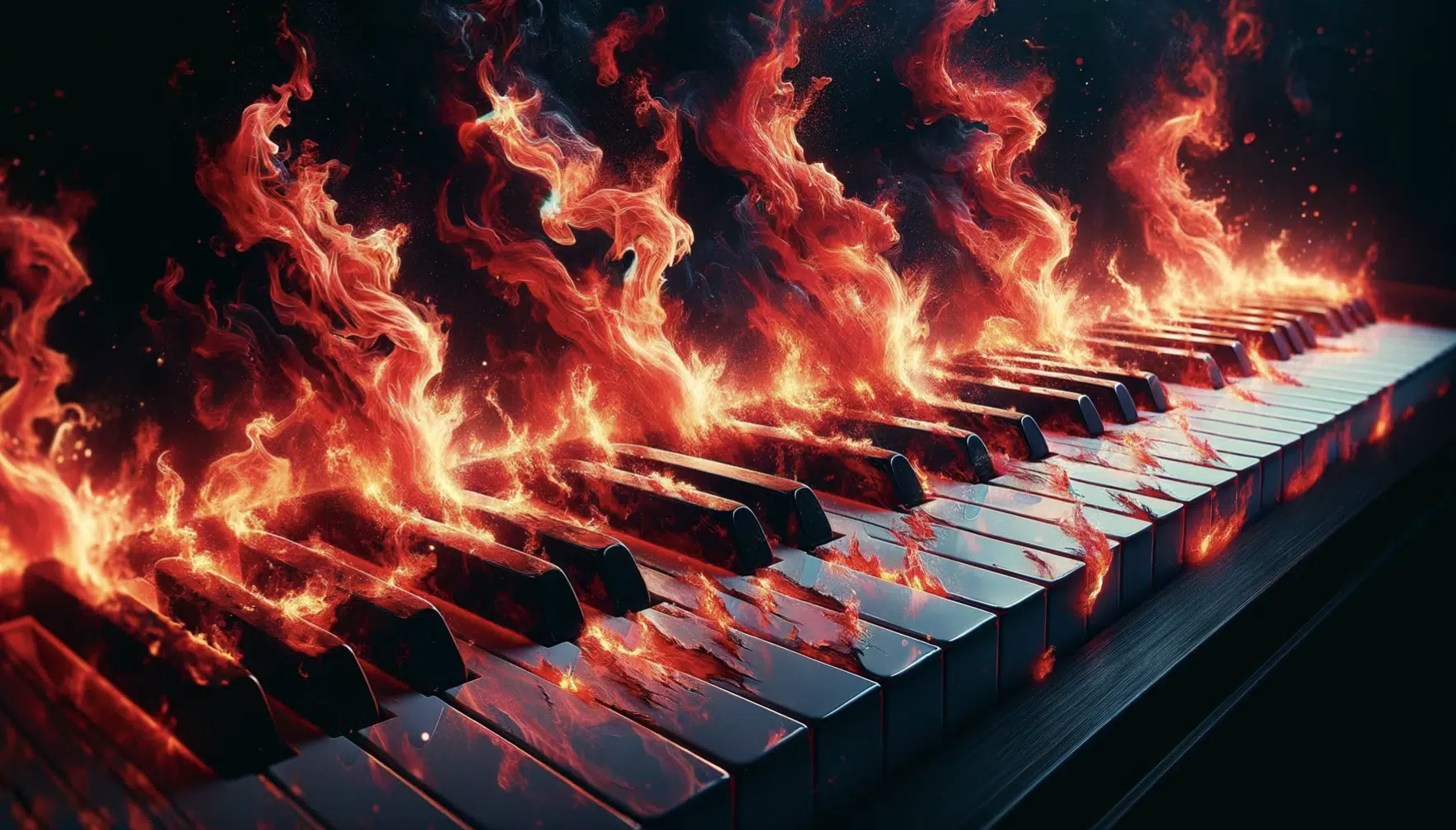
Angry chord progressions get their intensity from the strategic use of:
- Dissonance
- Minor chords
- Diminished chords
Dissonance creates tension by clashing the same notes that don’t traditionally harmonize 一 producing a sound that can feel unsettling or tense.
This tension is a fundamental element of anger in music, simulating the disharmony and conflict associated with the emotion itself.
For instance, a progression that moves from a minor chord to a diminished chord, such as D minor to E diminished, can evoke feelings of unease and frustration.
It sets a perfect stage for an angry piece.
Minor chords (consisting of a root note, a minor third, and a perfect fifth) inherently carry a sad and reflective quality.
When these chords are placed in a progression, they can add depth to the anger, layering the immediate tension with an added sense of discontent.
For example, the progression A minor to D minor to E minor sounds sad before escalating into anger, especially when played with a dynamic, forceful rhythm.
-
The Importance of Minor Chords
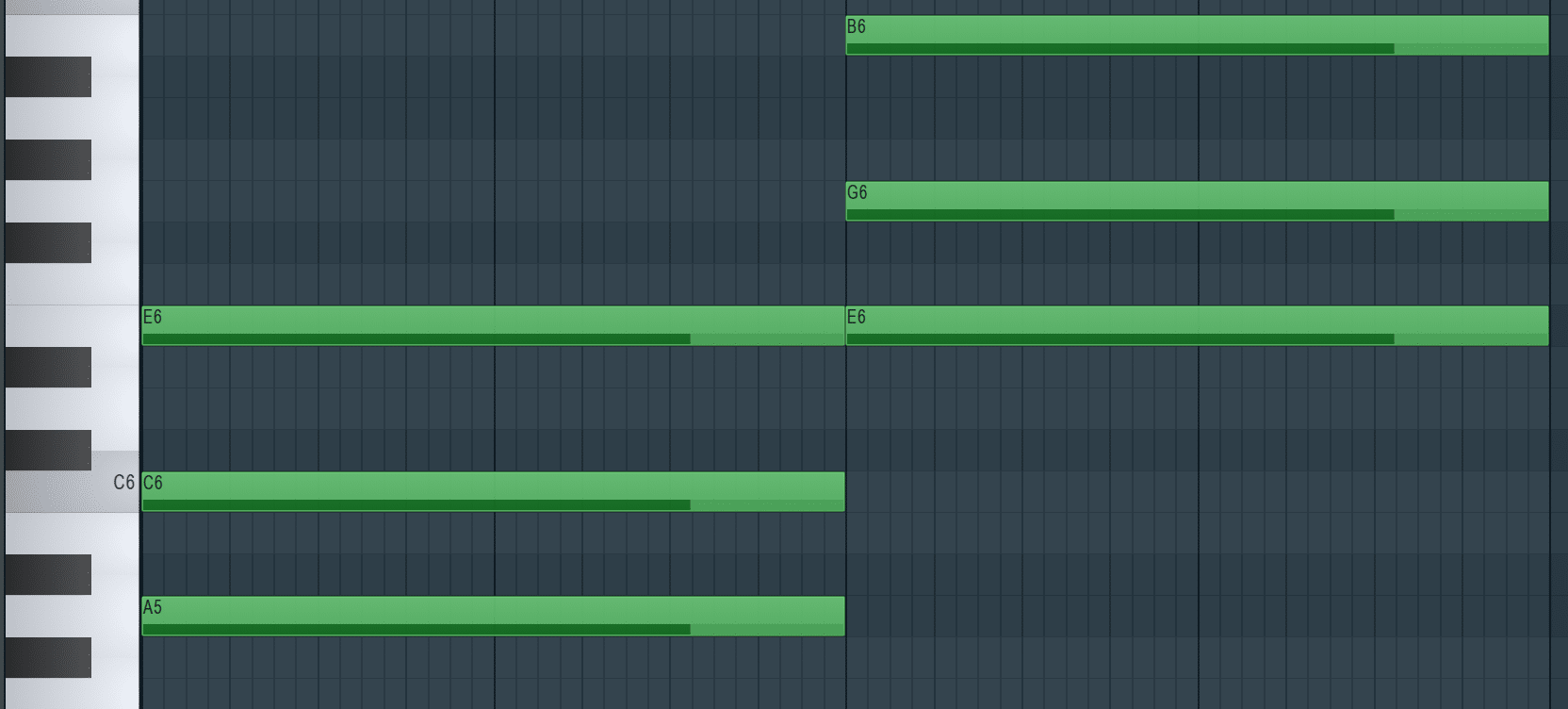
Minor chords are super important in building the emotional baseline of your tracks so they can transform into an angry, intense show-stopping hit.
Minor chords are made up of a:
- Root note
- Minor third
- Perfect fifth
It produces a sound that is naturally more depressing than major chords.
When it comes to an angry chord progression, these chords introduce an undercurrent of sadness/introspection 一 giving you some complex textures.
The minor chord’s ability to evoke these feelings makes it an invaluable tool for when you want to express a range of different emotions, from subtle to overwhelming rage.
Incorporating minor chords into a chord progression can significantly alter the emotional impact of your track.
A simple shift from a major to a minor chord can transform a section of music from ecstatic to full of pain, setting the groundwork for an angry crescendo.
For example, let’s look at a progression where a C major chord shifts to an A minor, followed by an F minor chord…
This sequence not only introduces the sadness of minor chords but also builds tension that paves the way for an angry explosion.
Advanced use of minor chords involves playing with their position in a progression to maximize emotional impact.
For example, placing a minor chord at the climax of a section in the same way (perhaps following a series of major chords like C major, G major, and A minor) can create a sudden, jarring transition that amplifies the anger in the music.
NOTE: The natural minor scale is made up of a sequence of whole and half steps, whole steps representing a tone and half-steps representing a semitone.
This sequence is: Whole, Half, Whole, Whole, Half, Whole, Whole.
-
The Impact of Diminished Chords
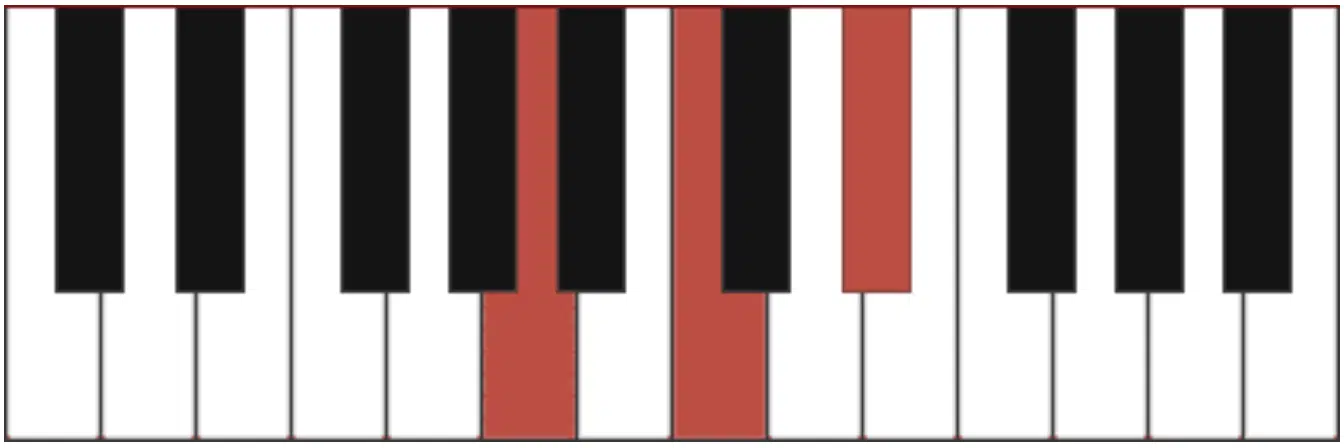
Diminished chords, known for their unsettled and tense sound, are another key element in producing angry chord progressions.
These chords are built from a:
- Root note
- Minor third
- Diminished fifth
It has a dissonant harmony that can feel very unstable, anxious, or nerve-wrecking.
This instability is perfect for music to give off that anger vibe, as it mirrors the emotional unpredictability associated with the feeling.
A progression like E minor to B diminished shows how the tension from a diminished chord can escalate the emotional intensity, leading to a powerful (yet smooth) expression of anger.
The careful placement of diminished chords within a progression can further magnify the angry tone of your song/beat.
For example, using a diminished chord as a transition between two chords in minor can heighten the overall sense of tension and unrest.
A sequence such as A minor, C diminished, D minor uses the dissonant quality of the C diminished to tie in the somber tones of the minor chords.
This will beautifully intensify the angry mood of your song.
It just shows how useful a diminished chords is when trying to bring that emotional depth and complexity of professional songs.
Pro Tip
To use diminished chords creativtely, I suggest you take advantage of their tension-building properties.
This leads into a resolution that releases the built-up emotional energy your listeners will hear right away.
However, in angry chord progressions, this resolution might be delayed differently or subverted, maintaining the high level of tension.
-
The Use of Dissonance/Dissonant Chords
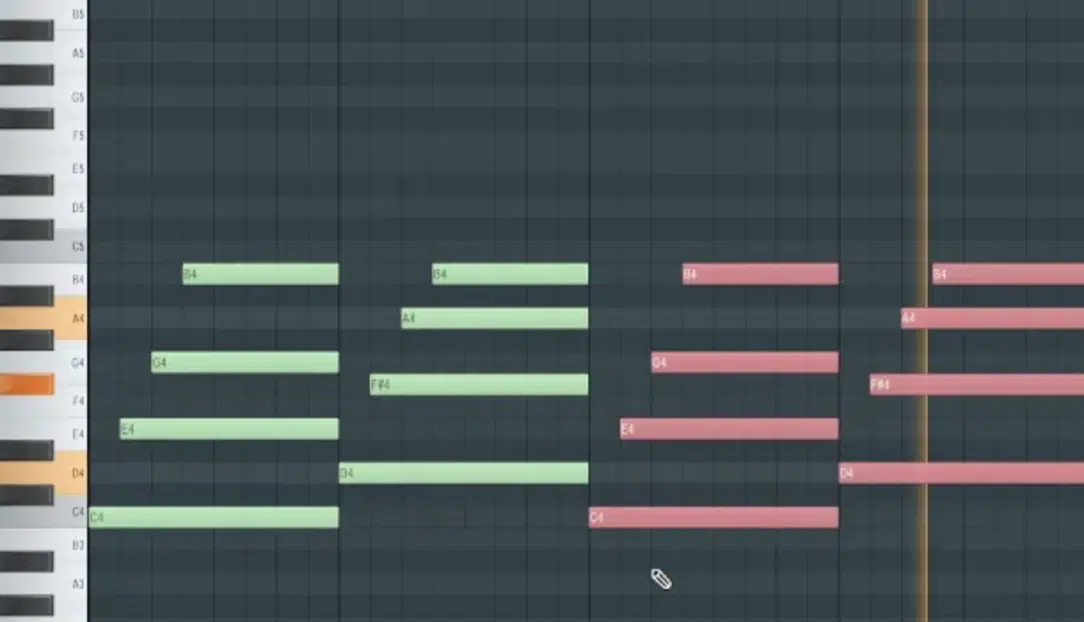
Dissonance plays a key role in creating angry chord progressions, as it directly contributes to a sense of tension and conflict within your song.
Dissonant chords, which include notes that clash when played together, create a sense of unease and dissatisfaction.
This musical friction is a huge attribute of anger, providing a sound that resonates with the emotion’s disruptive and chaotic nature (my absolute favorite).
A dissonant chord can be:
- As simple as two notes played a half step apart, such as B and C.
- More complex structures that include diminished or augmented intervals.
The incorporation of dissonant chords into a progression amplifies its emotional intensity and will make your tracks feel more urgent and forceful.
Anything to really trigger people’s anger sensors.
These chords can be strategically placed to highlight specific moments in a song/beat, creating peaks of tension that mimic the ebbs and flows of anger.
An effective progression might alternate between consonant and dissonant chords, like moving from an E minor to an F# augmented, then resolving back to E minor.
This back-and-forth creates a dynamic tension that keeps listeners engaged and all up in their feels, hopefully.
If you want to use dissonance creativity, you can experiment with unusual chord voicings and interval combinations, exploring beyond traditional triads to include seventh, ninth, or even more extended chords.
Dissonant intervals, such as minor seconds or tritones, can be introduced within these chords to create a sense of instability.
For example, a Cmaj7 chord with a D added (a major 7th chord with a minor second interval added) offers a complex sound that expresses anger and tension within a progression.
9 Angry Chord Progressions To Give Your Tracks Power
Angry chord progressions are the spice of powerful, emotionally charged music. These progressions can turn a simple melody into an intense sonic experience filled with anger and energy. Let’s explore nine specific angry chord progressions that can infuse your songs with the power of anger.
#1. The Classic Minor Downfall
The Classic Minor Downfall progression, moving from Am to Dm to Gm, perfectly reflects the essence of anger through its use of minor chords.
Each chord in this progression adds a layer of sadness and tension 一 building a foundation for anger.
Its downward movement (both metaphorically and musically) mirrors a descent into rage, which makes them super prominent in angry chord progressions.
#2. The Diminished Drive
In The Diminished Drive (a progression such as Cm to Gdim to Dm) the diminished chord plays a central role in heightening the emotional stakes, so to speak.
The Gdim chord introduces a sharp, biting tension, acting as a bridge that amplifies the anger conveyed by the surrounding minor chords.
This progression creates a driving force that propels the music forward, reflecting the relentless nature of anger you’ll hear right away.
#3. The Tense Trichord
The Tense Trichord progression utilizes a sequence of three chords, typically:
- Beginning with a minor chord
- Followed by a diminished chord
- Ending with another minor chord
A great example would be Em to F#dim to Gm.
This combination produces a compact yet intensely emotional progression 一 capturing the essence of anger with unmatched tension and release.
The diminished chord at the heart of this progression acts as a pivot point and emphasizes the angry mood even more.
#4. The Dissonant Dance
The Dissonant Dance progression is characterized by its deliberate use of dissonant intervals to create tension.
A progression like Bm to C augmented to Dm uses the clash between the Bm and C augmented chords to provide a palpable sense of unease.
This unease is then partially resolved by moving to Dm…
However, the resolution is not complete 一 leaving a lingering sense of conflict and anger that can drive your listener to the brink of insanity (in a good way).
#5. The Furious Fourth
The Furious Fourth progression, which moves from F#m to Bm, uses the interval of a fourth to inject a sense of anger into your song.
The leap from F#m to Bm is both bold and unsettling to fuel that angry energy.
NOTE: The Furious Fourth is especially effective in expressing a defiant, unyielding type of anger. One that will help you create that “I don’t care about the world” vibe (but it’s still super catchy, surprisingly).
#6. The Minor-Major Shift
The Minor-Major Shift progression, such as Cm to C major, plays with listeners’ expectations by abruptly changing from a minor chord to a major chord.
This sudden shift can evoke a complex emotional response, including:
- Surprise
- Discomfort
- Ultimately, anger
The combination of the sad minor chord with the brighter major chord creates a tension that is uniquely solid in expressing a special form of anger.
One that might be tinged with irony or a bitter sense of realization.
To give you a better idea, you’ll hear this one a lot when playing break-up hit songs.
#7. The Suspended Storm
In The Suspended Storm progression, a sequence such as Dsus2 to Dsus4 to D minor utilizes suspended chords to build anticipation and unresolved tension before finally resolving to a minor chord.
This method of delaying resolution mimics the brewing of a storm, symbolizing a rising anger that is eventually unleashed in the resolution to the minor chord.
Unleashing the beast is the perfect way to describe it, really.
The use of suspended chords here effectively creates a feeling of suspense and unease, making the eventual arrival of the minor chord all the more wickedly powerful/angry.
#8. The Chromatic Clash
The Chromatic Clash progression leverages chromatic movement, such as E minor moving to F minor, and then to F# minor, to create a sense of escalation and intensity.
This stepwise motion through adjacent semitones introduces a relentless tension that can feel both unsettling and provocative.
The gradual increase in tension achieved through chromatic movement perfectly encapsulates the building anger.
It makes this progression ideal for moments of increasing conflict or intensity in your song.
#9. The Power Progression
Finally, The Power Progression (like Am to E major to F major to D minor) combines minor and major chords to create a dynamic and emotionally charged sequence.
The transition from minor to major chords and back introduces an element of surprise and complexity.
It reflects the unpredictable, possibly manic nature of anger.
This particular progression is super effective in capturing the power and depth of anger 一 offering an emotional rollercoaster (in a cool, catchy, addicting way).
Implementing Angry Chords in Your Music
Implementing angry chords and progressions in your tracks involve more than just choosing the right sequences, scale, or cadence, etc. It’s about understanding the emotional impact of each chord as a musician and how they interact within the context of your track differently. Let’s break it down.
-
Choosing/Playing the Right Instruments
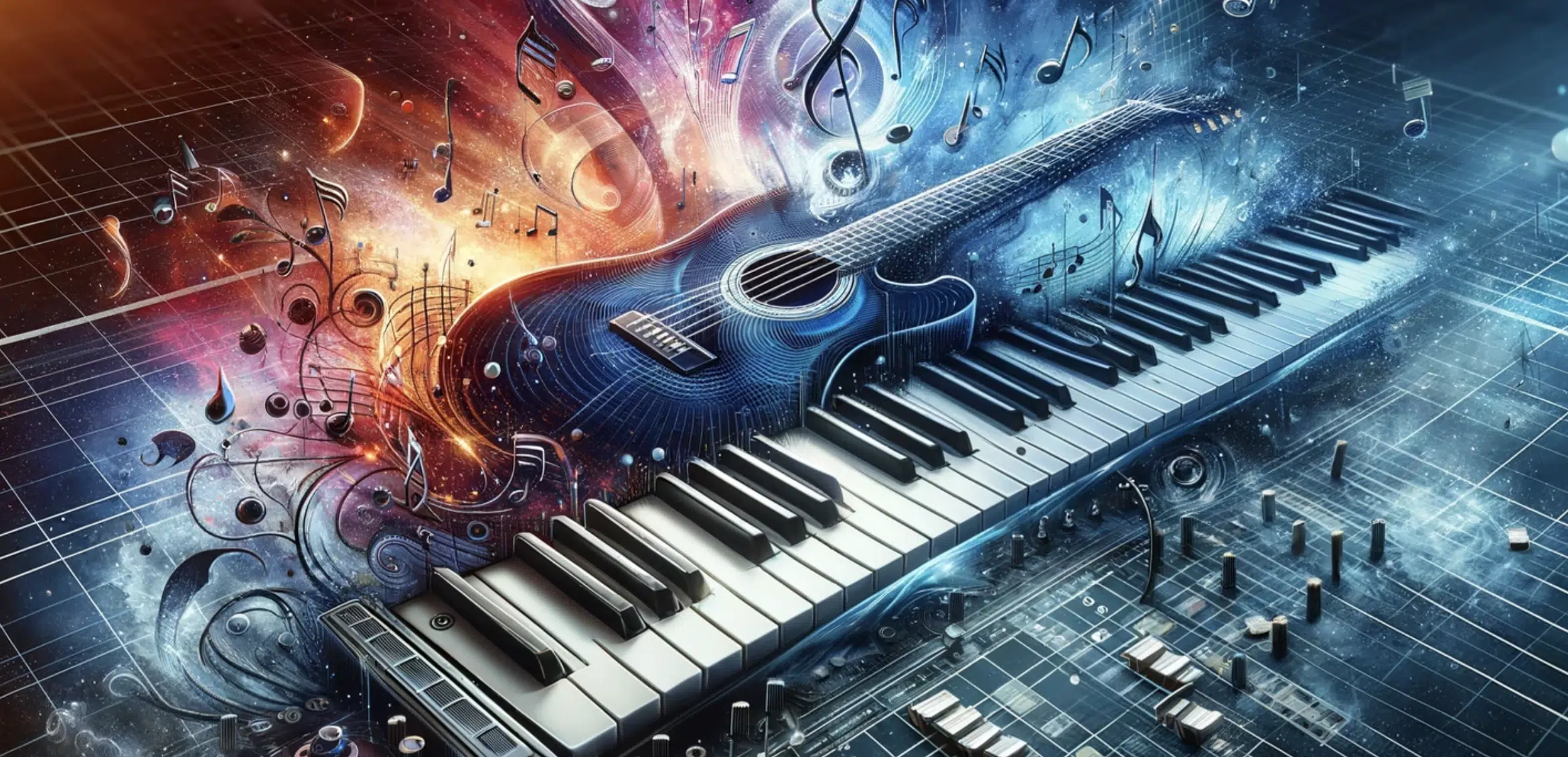
The choice of instrument plays a significant role in conveying the emotion behind angry chord progressions.
While an electric guitar and distorted sound are often linked with anger in rock and metal genres, a piano and string instrument can also scream ‘rage,’ just in a more subtle manner.
Just remember the timbre and playing style of the instrument can greatly influence the intensity of the anger expressed.
For example, a piano played with hard, staccato notes can give you that sharp, in-your-face anger, while a violin played with a fast, aggressive bowing technique can convey a sense of desperation and fury (super emotional).
Make sure to play around with different instruments and their combinations for more unique expressions of anger in your song.
NOTE
Synthesizers are great for playing around with different textures and sounds that can be manipulated to create unsettling dissonances or aggressive rhythms.
It can help you add to the emotional depth of the chord progressions.
The use of unconventional instruments or sound sources, like industrial foley sounds or digitally distorted voices, can also introduce a layer of anger that resonates with modern listeners.
-
Modulating Key for Emotional Impact
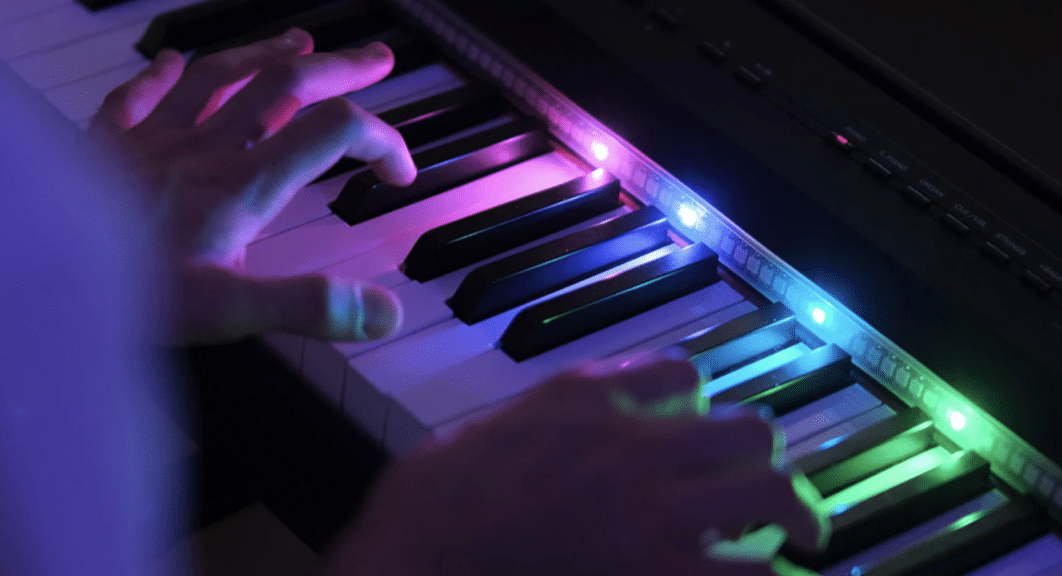
Key modulation, or changing the key within a track, can be a powerful way to enhance the emotional impact of angry chord progressions.
Shifting to a higher key can increase the intensity and urgency of the anger expressed, while moving to a lower key might deepen the emotion.
It adds a sense of gravity and seriousness.
When you’re producing, writing, or singing, modulating between major and minor keys within the same song can also add complexity.
It reflects the multifaceted nature of anger that can switch between outright aggression and a more slight rage beautifully.
This production technique requires careful planning to ensure the transitions feel natural and enhance the overall narrative of the track, rather than destroying it.
-
Using Silence as an Angry Element

Silence, often overlooked, can be a strong element in bringing anger to life.
Certain pauses or breaks within a progression can serve as powerful moments of tension 一 amplifying the impact of the surrounding chords.
These moments of silence mimic the breaths taken during a heated argument or the chilling calm before a storm, which adds a dramatic effect to your track.
By using silence against the aggressive sounds of angry chord progressions, you can create a nice contrast that highlights the intensity of the emotion.
It makes the anger more powerful and unforgettable.
Experimenting with the length and placement of these silences is everything, as it can help you discover the true potential of this underdog tool.
NOTE: A sudden stop in the music, followed by a forceful return of an angry chord progression, can surprise and engage listeners.
It will perfectly convey the unpredictability and explosiveness of anger.
Angry Chord Progressions: Final Thoughts
Angry chord progressions, as you now know, are super powerful and incredibly versatile.
They can evoke deep emotions, stir tension, and bring a unique intensity to your music.
Plus, when used creatively, they can transform a simple melody into an emotional powerhouse, captivating your audience and leaving a lasting impact.
To take your tracks to the next level, incorporating proven structures is key, and there’s no better resource than these FREE Famous MIDI Chord Progressions.
This incredible collection includes 24 unique MIDI chord progressions from famous songs by hit-makers like Post Malone, YNW Melly, ODESZA, Travis Scott, Billie Eilish, and so much more.
They’re the best way for you to set your tracks up to get millions of plays, no joke.
Whether you want to elevate a song you’re already working on or looking for a hit foundation for a new track, these progressions offer endless possibilities.
Yes, that includes producing tracks with a more angry vibe.
Plus, everything is 100% royalty-free, done for you, and usable with all your favorite sounds, so there are really no limits.
By experimenting with these angry chord progressions, you can unlock new realms of creativity and create tracks that resonate with power, emotion, and depth.
Don’t hesitate to explore the full range of emotions in your music and see what show-stopping tracks you can create when you channel the intensity of anger.
Until next time…







Leave a Reply
You must belogged in to post a comment.